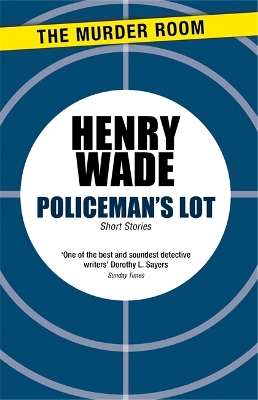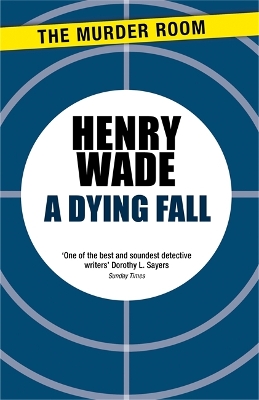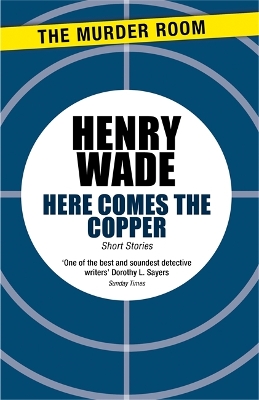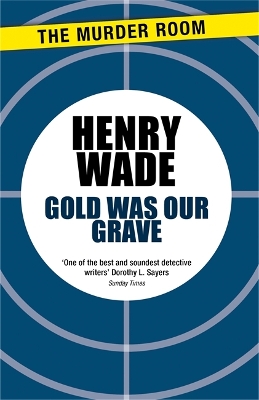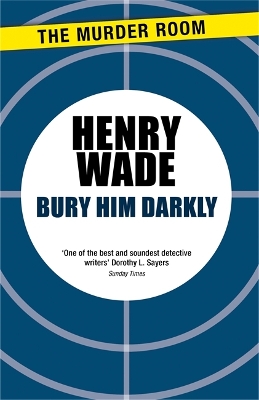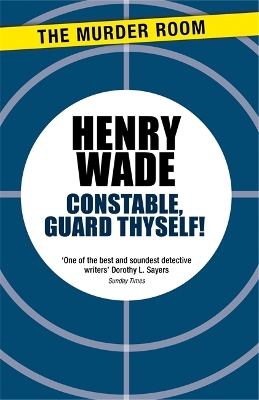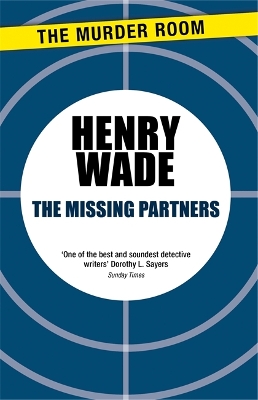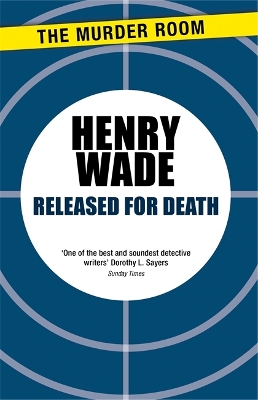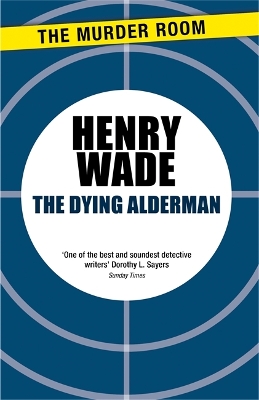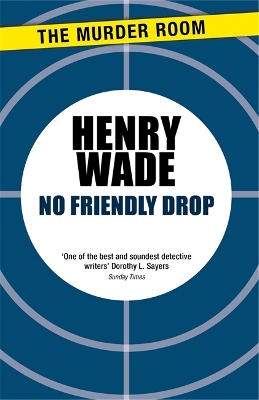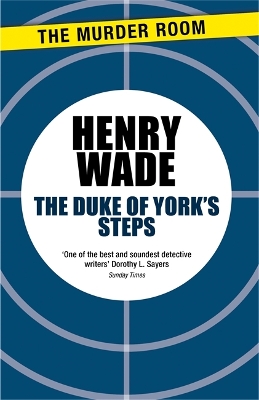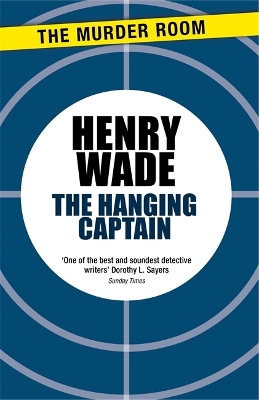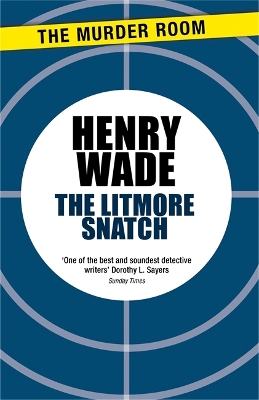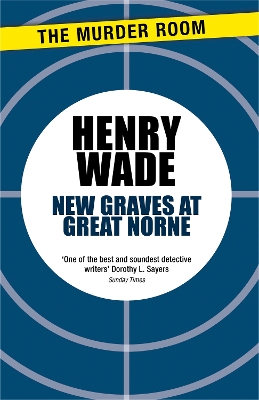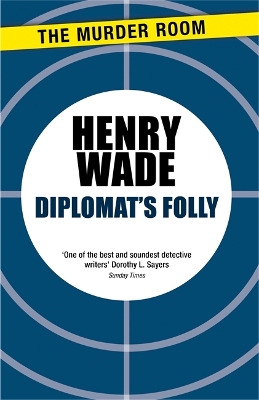Murder Room
21 total works
Hilary and John Pansel have muddled along in their cottage in the small community of Bryde-by-the-Sea for ten years, hopeful that John's paintings will ignite a flame of interest in the art world.
Now Hilary is being pursued by a successful writer from London, Dallas Fiennes, who has retreated to Norfolk to write another bestseller to replenish his bank account. For Dallas, Hilary is no more than an amusement - one of many - but when John becomes jealous of Dallas's attentions, Hilary is driven into the writer's arms.
Then Fiennes is found dead, and John Pansel is the prime suspect . . .
Colonel Jerrod has just six months to live, but he needs a year if he is to save Brackton, the family estate, from crippling death duties. Then his ambitious son, Grant, has an idea, one that involves Colonel Jerrod's carefree brother, Philip, and which develops into a complicated fraud that, he hopes, will safeguard Brackton for future generations.
But there is a boating accident, in which Colonel Jerrod is believed drowned, and a visit at Brackton from the Inland Revenue to clear up some routine questions . . . Before long, Chief Inspector Poole finds himself drawn into the investigation with questions of his own.
Charles Rathlyn has everything - a benefactress, a rich wife and a comfortable country life. But while riding to hounds one day he takes a terrible spill, and, on reviving, finds himself looking into a pair of beautiful brown eyes. He knows he has fallen once again . . . in love.
But are his fall and those soft brown eyes linked to another fall - the fatal plunge his wife, Kate takes over the banister to the parquet floor below, supposedly while sleepwalking?
Did she fall or was she pushed? Kate Rathlyn's death begins an investigation into blackmail and murder among the sporting set.
Detective Constable Henry Campion turns lone avenger when his childhood friend and colleague DC Fred Jordan is shot dead by a gangster who is spared the death sentence. And Campion is convinced there were two killers. To try to catch the second, Campion goes undercover as a spiv in a King's Cross nightclub, the Full Moon.
But Campion's adventures at the Full Moon draw him deeper into gangland, and closer to the woman of his dreams - his dead friend's widow . . .
But is it love, or is Anne Jordan using Campion for her own ends?
PC John Bragg is young and full of ambition, and with his eye on making Superintendent one day, he squares up to each case that comes his way as an opportunity to show himself brave, reliable and a good detective. In town and country, at scenes of murder, robbery, fraud, abduction, military and industrial spying and arson, PC John Bragg's character grows as his mettle is tested.
From dealing with artists' models in a murder case, to ensuring a bejewelled, high-spirited American heiress doesn't attract the wrong sort of attention, to protecting the pay destined for a staff of quarrymen, PC Bragg has his work cut out for him.
Sir Robert D'Arcy, High Sheriff of Brackenshire, harbours a painful memory of what he considers his shameful surrender to the Germans in 1916. Gradually he realises nothing is known of the incident and his confidence returns, and he gains in honour and responsibility in the county.
Then, out of the blue, a man appears who threatens to reveal the incident - or to keep it hidden, at a price. D'Arcy resists this new enemy, but is handicapped by his own view of his position, his past deed, his family pride. A tragedy occurs, and the Brackenshire police investigate, but are themselves hampered by reluctance to muddy distinguished waters.
How is the ageing Chief Constable to face the problem?
Hector Berrenton returns home from hospital after a serious car accident to find a terse note: San Podino. This is yours. Fallon next.
Suspecting Berrenton's car has been tampered with, the North Sussex Police call in Scotland Yard. Chief Inspector John Poole, put in charge of the investigation, quickly discovers that three years earlier Berrenton and his partner, Jocelyn Fallon, had been on trial accused of fraud. The crime they were accused of was in connection with a Bolivian goldmine, San Podino, and though the two men were acquitted, a number of investors suffered considerable financial loss.
Soon Inspector Poole is dealing with attempted murder . . .
The night watchman at Hallams, the long-established Bond Street jewellers, is found dead with his head battered in, and a number of display cases have been rifled. Chief Inspector Burr picks up the trail, with the young Inspector Poole as his assistant.
But before long, the crime at Hallams is overshadowed by a mystery which stirs Scotland Yard into a frenzy of activity. Even the great Superintendent Fraser is aroused from his customary Olympian calm; but it is the detailed work of young Poole which eventually solves the double problem, links mystery to mystery and brings the clear light of day . . .
Two threats from a newly released convict - a poacher framed on a murder charge - put Captain Scole, Chief Constable of Brodshire, on his guard. Special men are assigned to protect him.
But four days later, Captain Scole is found shot through the head at his desk in Police Headquarters.
A full week later, young Inspector Poole of Scotland Yard is called in to follow a cold trail in the face of open hostility from the local police. And the further he explores the murder, the more baffling it becomes.
Could Scole's First World War past be catching up with him - or something much closer to home?
Cousins James and Charles Morden run a shipping company in Liverpool that is, in the wake of the Great War, struggling. It appears there have been financial irregularities, and then James Morden's body is washed up on a bank of the Mersey. Evidence points to Charles Morden, after burning a lot of papers, having fled to New York.
It turns out there's an illicit side to the business - and that James Morden's wife, Lilith, is a major player.
The strands of the plot seem past untangling, but the family solicitor, William Turnbull, grasps every thread and draws them all together . . .
Two men in Hadestone Prison are approaching the end of their sentences for burglary and assault. James Carson is well educated but brutal; Toddy Shaw is a cheerful cockney who considers burglary a sport. Trouble flares in the chapel, and both Shaw and Carson are involved. Eventually both men are released, but old hatreds fester.
Toddy gets work on leaving prison, wanting to do right by his wife and family. Carson, released later, soon comes looking for Toddy.
Then a nightwatchman at a bank is murdered - a former prison guard at Hadestone - and Chief Inspector Holby will need to prove himself a match for whatever dark mind is on the loose . . .
Geoffrey Hastings is doing very well for himself: having survived the Great War, he is not only working for wealthy financier Sir John Smethurst but is engaged to his daughter, Emily. Hastings has a rival for Emily's affections in the form of Samuel McCorquodale, a successful businessman and both friend and rival of Sir John, and there is no love lost between the two men.
Then Sir John is found murdered, and suspicion falls on Hastings until an unexpected alibi sets him free.
But who did murder Sir John? Layer after layer of deception is peeled away until the shocking truth emerges . . .
At a meeting of Quenborough Borough Council, the Mayor, Sir John Assington, is accused by Alderman Trant of wasting money and turning a blind eye to speculators on the make.
Then Trant is stabbed with his own knife, and while dying, manages to scratch the initials 'MA' on a piece of paper.
Local Chief Constable Race is on the case. He is new to the force, so Superintendent Vorley comes to his aid. With the help of Scotland Yard, in the shape of Inspector Lott, they each bring a different approach to the investigation.
For the truth is rarely straightforward . . .
At first it seems that Lord Henry Grayle has taken an overdose of sleeping medicine, but the autopsy reveals a tiny amount of scopolamine along with the draught - harmless in itself, but fatal when mixed . . .
A poisoner with apparently expert knowledge is at work in the great house at Tassart. But from what motive, and how? Before he can find an answer to these questions, Detective Inspector John Poole is faced with a second, more horrible murder.
And when there are shocking revelations both above and below stairs, Poole starts to see light breaking on the horizon.
A wealthy banker, Sir Garth Fratten, dies suddenly from an aneurysm on the Duke of York's Steps. His doctor is satisfied that a mild shock such as being jostled would be enough to cause Sir Garth's death. It all seems so straightforward, and there is no inquest.
But Fratten's daughter Inez is not satisfied. She places an advertisement in the London newspapers that comes to the attention of Scotland Yard, and Inspector John Poole is assigned to make enquiries.
Poole's investigation leads him into a world of high finance where things are not as they seem; a sordid world in which rich young men make fools of themselves over chorus girls.
Sir Herbert Sterron is found dead, hanging by the neck from a curtain cord. He had good reason to want to kill himself, so nobody is unduly surprised.
But then hints of foul play start to emerge: Sterron's wife, Griselda, was desperately unhappy with the marriage; and shocking evidence is uncovered that incriminates not just the County Sheriff but a Catholic priest.
Now what looked to be a straightforward suicide is turning into something quite different - a complex case of murder . . .
Harborough is a large seaside town on the north-east coast of England, whose local paper, the Harborough Post, mounts a campaign against the city's funfairs. Soon the proprietor of the newspaper, Herbert Litmore, gets two anonymous threatening letters, which he takes to the Chief Constable. Then Litmore's ten-year-old son, Ben, is kidnapped on his way home from the city Youth Club.
Another letter to Litmore follows, demanding a £10,000 ransom . . .
A search is begun to locate Litmore's mysterious enemy, and the police investigation starts to unravel a web of greed, jealousy, adultery and blackmail that has formed beneath Harborough's quiet surface.
Great Norne is a small harbour town in East Anglia that once flourished with trade. Now the quiet community is being terrorised by a series of murders: the vicar, Reverend Torridge is found dead on the quayside; then Colonel Cherrington is shot in his study. A third death follows.
The last person to die violently in Great Norne was young Ellen Barton, who killed herself twenty years ago.
But there are secrets in this close-knit, religious town - secrets that might provoke someone to bloody revenge. The local police, under Chief Inspector Myrtle, must uncover those secrets, digging into the past, to solve the murders . . .
Aylwin Hundrych is a diplomat with political aspirations, who was once involved with a French girl, Antoinette, with whom he unwittingly shared details about a royal visit to Paris - details which put the King's life in danger. Antoinette's brother holds the former lovers' letters, and is threatening to use them. Hundrych makes a first payment, but the demands continue.
Hundrych enlists his old friend Sir Vane Tabbard's son, an ex-commando called Gray Tabbard, who is not too scrupulous about what he does. Gray searches the blackmailer's apartment, but reports back that he cannot find a particularly compromising note.
And Gray is in love with the girl Hundrych plans to marry . . .

